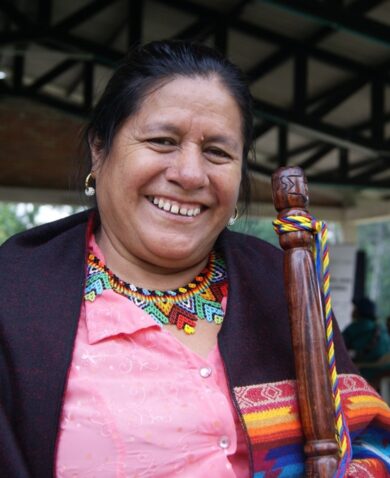
5 Years After the Haiti Earthquake: Is Haiti Better Off?
January 13, 2015 | 2 Minute ReadLooking back on the last five years of development in Haiti, what have we learned? Putting locals in the driver's seat is crucial to sustainable change.
Off one plane came firemen from Miami. Off another, volunteers from France. The stream of aid workers and supplies seemed endless as they flooded the Toussaint Louverture airport in Port-au-Prince, where I had come to evacuate some consultants who had worked with the USAID watershed management project I was leading in my native country of Haiti.
It was January 14, 2010, only two days after the 7.0 Mw earthquake that killed hundreds of thousands of people. It is hard to describe the nightmare of the earthquake for someone who wasn’t there. Buildings had collapsed. Families had been displaced. Even the government was barely operational. Thankfully, the U.S. military had stepped in at the airport to ensure that plane after plane was able to transport workers, volunteers, and supplies. Never before had we seen such devastation, but never before had we seen such international support and cooperation.
It has been five years since the earthquake, and people are asking, “Is Haiti better off?” Probably the most significant accomplishment has been to prevent a total collapse after the quake and, within just a few years, put Haiti back on track to long-term economic growth and greater resilience to future environmental shocks.
A good example of “getting it right” in Haiti is the dam that USAID will complete this month on the Riviere Grise (shown, left). In the 1970s, a hurricane destroyed the area’s dam, leaving nearby farming communities vulnerable to flooding for decades. This new dam (click here for more about the dam) incorporates innovative technologies not seen before in Haiti. It will not only strengthen river banks and protect against flooding, but also supply a refurbished irrigation system so that farmers can plant in the dry season and significantly increase their incomes. The farmers in the area are thrilled about the new dam, which is a genuine example of “building back better.”
Of course, there are still ways we can improve development. Based on very real progress accomplished in Haiti, here are some best practices to keep in mind in the years ahead:
- Have confidence in beneficiaries. You need to believe in people and give them the tools and the knowledge to contribute to their own development. On Feed the Future – West/WINNER, we have seen the potential of equipping smallholder farmers with high-quality seeds and technologies, while providing access to irrigation water, and having the confidence that they will be able to change their practices and improve their incomes.
- Find the medium between listening to beneficiaries and importing solutions we know will work. It is important to import global best practices in areas like agriculture, but remember that development needs to be bottom-up, not top-down. Listen to beneficiaries. Some of the best solutions come from listening to their perspectives.
- Work directly with individual beneficiaries, but don’t forget about institutions. You cannot expect to have large-scale impact without the support and true ownership of the government and local institutions. This is true in any sector of development, whether health or agriculture.
I should mention that I was back at the Port-au-Prince airport only a few days ago. Today, we have a brand new airport with modern services, the best airport Haiti has ever had. It now has more airlines coming in than ever before. I am well aware of the ways in which we can make development better in the future, but now when I travel to and from my home country, I am reminded of what we can accomplish working together and the potential for the future.













